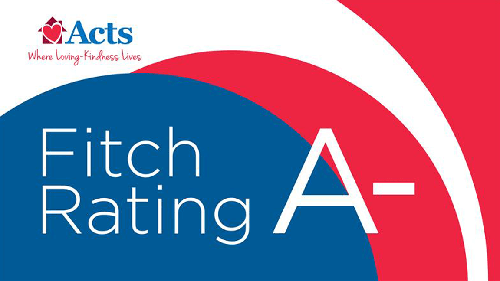CCRC vs. Assisted Living vs. Nursing Homes: What's the Difference?
Modern retirement has changed as it has advanced. It’s common now for people to be retired for two, three, even four decades. Where you live when you first retire is not necessarily where you will remain as the years progress.
What many have begun thinking about is where they will end up. Adult children are also thinking about how to bring the best quality of life to their aging parents.
That’s where this article comes in. Let’s talk about the differences between three forms of late-stage retirement options: assisted living communities, nursing homes, and CCRCs (or continuing care retirement communities).

Assisted Living vs. Nursing Homes
Let’s start with the simplest comparison. Everyone has likely heard of assisted living campuses and nursing homes. They tend to be for retirees who need more healthcare attention.
- Nursing homes are suitable for people who mostly can’t function on their own and need 24-hour support from a licensed healthcare provider. Another term for nursing homes are skilled nursing care facilities.
- Assisted living campuses offer a higher level of independence, with basic support for everyday needs. Residents often dine with friends on campus and take advantage of campus amenities and social engagement activities, but they are not fully independent. They require assistance with daily living, such as bathing and getting around.
If nursing homes are for those who need the most support, and assisted living less so, CCRCs most commonly are for those who require little healthcare support now, but are planning for a day when they might.
CCRC vs. Assisted Living
CCRC stands for continuing care retirement communities. The AARP defines a CCRC as part independent living, part assisted living community, and part skilled nursing care that aim to provide a continuum of care as residents age.
So, what is the difference between a CCRC and assisted living?
When someone moves into a CCRC under an independent living contract, they do not require an abundance of supportive healthcare services at that time. They choose an apartment or even a cottage home or villa in more of a neighborhood setting, and are often free to pursue their retirement passions — vacationing, spoiling their grandkids, playing golf, participating in hobbies, and whatever else they want.
The biggest difference between a CCRC and an assisted living-only campus, then, is that with the assisted living facility, a resident is moving in because they can no longer live independently due to age-related limitations. Many independent living residents choose a CCRC so they can prepare for a day when they might require more health services.
One of the main benefits of a CCRC is that if a resident ever needs assisted living, they do not need to find a new place to live. The CCRC typically offers home health care, assisted living, rehabilitation and even skilled care when required. If you’re lucky enough to choose a CCRC with a “life plan” contract, your entrance fee pre-pays your future healthcare, so there are no unexpected increases to your monthly rates due to the need for a higher level of care.
And because CCRCs are considered a premier form of retirement destination, they work to ensure their health servicesexceed the same high level of standards expected from an assisted living-only facility.
That means that you likely will be receiving a more personalized and higher quality of care in a CCRC than a standalone assisted living facility. Once a resident reaches assisted living status, in terms of the service provided, there essentially is no difference between a CCRC and assisted living. That is, with two very important exceptions in the CCRCs favor:
- Because a CCRC provides both independent and assisted living options, if you ever do need to transfer to assisted living, it occurs on the same campus, in the same environment, with the same friends and trusted staff still nearby. You may transfer to a new building, but you aren’t moving away.
- Unlike most standalone assisted living facilities, if a CCRC resident ever needs additional support, in the form of skilled nursing care, that is also available on the same campus.

CCRC vs Nursing Homes
Like a CCRC vs. assisted living, there is little difference between a CCRC vs. nursing homes. Because a CCRC provides a full continuum of care, if a resident ever has a need for a nursing home, they can receive skilled nursing care through their CCRC. The resident will receive the same level of required care.
Where the differences between a CCRC vs. nursing homes again favor a CCRC is that, should the resident ever graduate out of skilled nursing care, becoming appropriate again for assisted living or even independent living, they can do so much more easily in a CCRC. The continuum of care swings both ways.
At the CCRC, assisted living and skilled nursing is provided in a homelike environment that just happens to be on the same campus you already know and love.
Cost Comparisons
Comparing a CCRC, assisted living community, and nursing home doesn’t stop at the type of care provided. There are other ways that these options differ, with the most notable being the cost.
- Independent living only: On a campus that only offers independent living, those requiring limited support and health needs will pay a monthly rate for their living space and any provided amenities, and go off-campus to a personal provider for minor healthcare services required, such as an annual physical exam or occasional trips to an urgent care clinic, paying whatever is dictated by their Medicare or other insurance policies.
- Assisted living facilities: Those requiring some assistance will pay more than what a monthly fee for independent living would be (either in a house with mortgage and/or property taxes, an apartment with rent, or another situation), to cover the costs of the staff helping with daily living.
- Nursing homes: Those requiring advanced assistance will likely pay the most for additional staff, health services, and equipment.
The outlier here is a CCRC. That fee structure works differently.
If you live in your family home, or in a townhouse in a 55+ community, or in your own apartment, and then need to transfer to assisted living, your monthly fee could increase several thousand dollars to pay for the assisted living service.
CCRCs can operate much in the same way. You can pay one fee for the independent living property and then pay more if your health needs change. But many CCRCs, including Acts Retirement-Life Communities, allow you to pre-pay much of your health expenses in today’s dollars under a Type A “life plan” contract, allowing you to avoid healthcare inflation costs and gain a better understanding of what your monthly budget will be over the years.
In essence, you pay an entrance fee when you move in, and then a monthly fee for your property and access to amenities such as pools, fitness centers with trainers, hobbies and classes, fine dining, excursions, home maintenance and lawn care, and more. Then, whenever you need a higher level of care such as assisted living or skilled nursing care, it is already included maintaining the same monthly rate. You will never need to worry about having to pay more (with the exception of standard cost of inflation increases, which are annual for most CCRC campuses).

Finding the Best Options for Your Own Late-stage Retirement
Retirement is all about planning for the future. Taking steps now to ensure that you can enjoy your retirement to the fullest means that you have fewer potential worries down the road. With a little preparation and forethought today, you’ll be better situated for whatever the future holds when it comes to ensuring your healthcare needs can be met easily and in comfort. That’s why it’s important to understand the differences between a CCRC, assisted living facility, and nursing home in order to consider your options carefully and decide which will be the best choice for you.
For adult children, a CCRC often provides exceptional peace of mind — they know their aging parents can enjoy themselves now, with the appreciation that should anything change, their additional health service needs will already be covered within the same environment. View our retirement communities’ resources or more information about what retirement facility is right for you.
Acts provides some of the best CCRCs in the country. Please feel free to explore our 28 campuses across nine states.
We also offer our exceptional assisted living and skilled nursing care environments to non-residents in need of such health services today. Let us know if you or a loved one needs help now.





